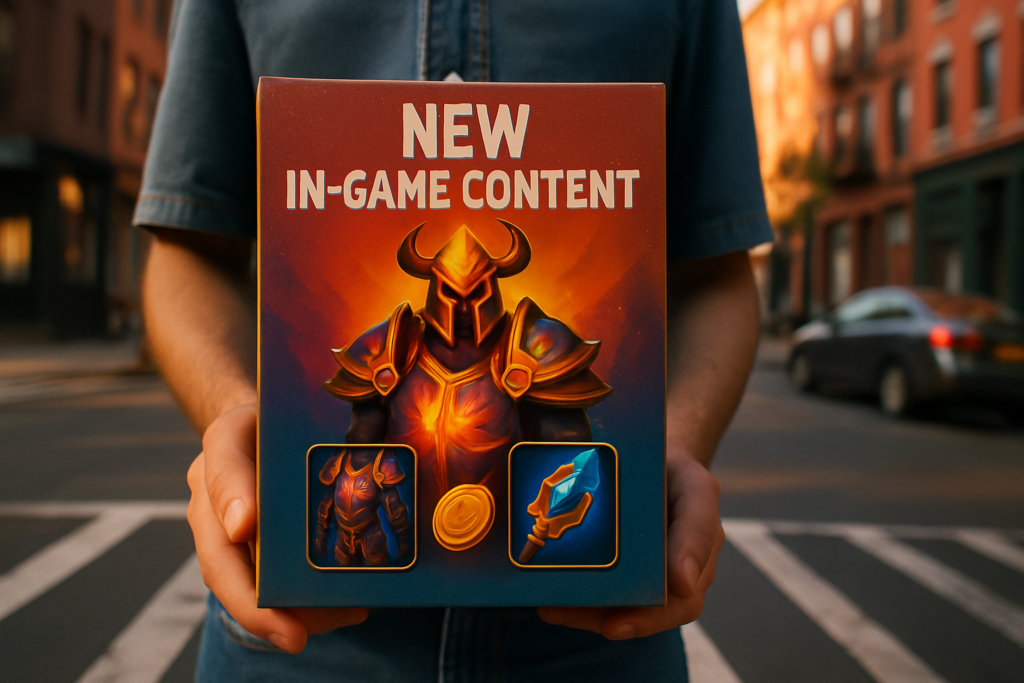Overview of Monetization in Mobile Games
Monetizing mobile games involves leveraging various strategies to generate revenue, aligning with user preferences and maintaining gameplay quality.
Mobile game developers employ several techniques to achieve this balance, ensuring both profitability and player satisfaction.
In-App Purchases
In-app purchases offer users the option to buy virtual goods, enhanced features, or game currency.
This method is popular in free-to-play games, driving significant revenue without forcing players to pay upfront costs.
Examples include:
- purchasing extra lives
- custom skins
- power-ups
Advertising
Advertising in mobile games spans various formats such as banner ads, interstitial ads, and rewarded videos.
Each format offers unique benefits, with rewarded videos being particularly engaging.
Players watch ads in exchange for in-game rewards, creating a win-win scenario for developers and users. Effective ad placement minimizes disruption to gameplay.
Subscription Models
Subscription models in mobile games provide continuous revenue by offering exclusive content or benefits on a recurring basis.
Monthly or yearly fees keep players invested, offering access to premium features, ad-free experiences, or special items. Examples include memberships or battle passes in games.
Sponsored Content
Sponsored content integrates brand partnerships into the gaming experience. Brands collaborate with developers to create custom in-game items or events that promote their products.
These partnerships can enhance the gaming experience while providing a lucrative revenue stream for developers.
Limited-Time Events
Limited-time events incentivize players to spend money to participate in exclusive activities or acquire rare items.
These events create a sense of urgency, driving revenue through scarcity and exclusivity. Examples include holiday-themed challenges or special edition items.
Partnerships and Cross-Promotions
Partnerships and cross-promotions involve collaborating with other games or brands to promote content mutually.
Developers can introduce special characters or items from other franchises, appealing to a broader audience. These collaborations can boost engagement and revenue by leveraging existing fan bases.
Data Monetization
Data monetization involves analyzing player behavior and using insights to optimize monetization strategies.
Developers gather data on in-game actions, preferences, and spending habits to enhance user experience and drive targeted advertising. This method ensures that monetization efforts are well-informed and effective.
Understanding these monetization strategies in mobile games helps developers implement suitable techniques, balancing profitability and user satisfaction.
These approaches ensure that players remain engaged while generating revenue for continuous game development.
Key Monetization Strategies

Mobile game developers employ various monetization strategies to generate revenue and enhance user engagement. These methods ensure games remain profitable while delivering enjoyable user experiences.
In-App Purchases
In-app purchases (IAPs) offer players the ability to buy virtual goods, game enhancements, and exclusive content. Items like:
- skins
- characters
- power-ups
- extra lives cater
To diverse player preferences.
For example, in Clash of Clans, players purchase gems to speed up progress or unlock special items. IAPs create a revenue stream by providing value that players are willing to pay for.
Advertisements
Advertisements (ads) integrate seamlessly into mobile games, offering developers a steady revenue stream.
- Banner ads
- Interstitial ads
- Rewarded videos are common formats
For instance, in Candy Crush Saga, players watch short video ads to earn extra lives or power-ups. Ads should be non-intrusive to maintain gameplay quality, ensuring players don’t feel overwhelmed by frequent interruptions.
Subscriptions
Subscription models provide recurring revenue by offering exclusive content or enhanced game features.
Subscribers access benefits like ad-free experiences, premium in-game items, and early access to new features.
An example is Apple Arcade, where users pay a monthly fee to access a library of premium games without ads or in-app purchases. This model ensures a stable income and fosters long-term player loyalty.
Evaluating the Impact of Monetization Strategies
Analyzing the effects of monetization strategies on both player experience and revenue generation is crucial. Data and player feedback help in understanding these impacts.
Player Experience
Evaluating how monetization strategies affect player experience offers valuable insights. Analyzing data on user retention can reveal how strategies such as in-app purchases and advertisements influence engagement.
If players encounter frequent ads, they may feel overwhelmed, leading to a negative experience. Thus, creating a balance is critical.
Surveys can also provide qualitative data on player satisfaction. Feedback from these surveys can guide adjustments to ensure monetization methods do not detract from the gameplay.
For instance, limited-time events can enhance excitement without disrupting the core experience.
Revenue Generation
Understanding the revenue outcomes of different monetization methods helps optimize financial performance.
Comparing metrics such as Average Revenue Per User (ARPU) across various strategies like subscription models and in-app purchases provides insight into effectiveness.
Subscription models may show steady income, while in-app purchases can create spikes during special promotions.
Advertising partnerships should be analyzed for their contribution to overall revenue. Integrating ads within non-intrusive sections of the game can maximize ad performance without degrading user experience.
For example, rewarded ads give users control over ad engagement, often increasing ad interaction and revenue positively.
Ultimately, data-driven analysis of both player experience and revenue generation allows developers to refine monetization strategies effectively.
The Future of Monetization in Mobile Gaming
Mobile gaming remains a dynamic space, continually evolving with new monetization strategies that reshape how developers generate revenue while engaging players.
Emerging Trends
- Multiplayer Experiences: Social and competitive elements attract players, boosting engagement and in-game spending. Examples include real-time battles and team-based activities.
- Rewarding Advertisements: Interactive ads offer in-game rewards, making ads less intrusive and more appealing. Players watch videos to earn currency, lives, or power-ups.
- Subscription Services: Monthly or yearly subscriptions provide exclusive content, premium currencies, and ad-free experiences. This model ensures steady revenue streams.
- Blockchain Integration: Blockchain technology brings digital ownership with NFTs and play-to-earn mechanics. Players trade in-game assets, increasing revenue opportunities.
- Personalization: Tailored offers based on player behavior maximize conversion rates. Personalized in-app promotions enhance user experience and drive spending.
Predictions and Market Analysis
- Increased Use of AI: AI optimizes ad placements and personalizes content delivery, improving user experience and advertising ROI. It’s set to become a critical tool for developers.
- Growth in AR and VR: As AR and VR technologies advance, games incorporating these elements offer unique monetization avenues. Virtual items and immersive ads could dominate.
- Expansion of Cloud Gaming: Cloud gaming removes device constraints, broadening the audience. Subscription-based cloud services like Xbox Game Pass gain popularity.
- Global Market Trends: Emerging markets, particularly in Asia, show rapid growth in mobile gaming. Catering to local preferences with localized content boosts monetization.
- Revenue Estimates: According to Newzoo, the global games market could reach $200 billion by 2023, with mobile gaming capturing half of this market. Monetization strategies evolving with market trends ensure robust revenue growth.
These trends and predictions highlight the innovative pathways shaping the future of monetization in mobile gaming.


 is the founder of Luck Lounge Land, a platform dedicated to gambling and game theory. Raised in Ironton, Ohio, Ronaldie studied Business Administration and Information Technology at Ohio University. Inspired by a summer internship at a Las Vegas casino, he created Luck Lounge Land to blend his expertise in business and gaming. His website offers news, insights, and interactive features for gambling enthusiasts worldwide.
Ronaldie's innovative approach has made Luck Lounge Land a popular resource for gamblers. He frequently shares his knowledge through articles and webinars. His passion for educating others is evident in the site's 'Game Theory Academy.' Ronaldie's commitment to quality content has attracted a loyal following. He continuously seeks ways to enhance the user experience. Outside of his work, Ronaldie enjoys exploring new casino trends and technologies.
is the founder of Luck Lounge Land, a platform dedicated to gambling and game theory. Raised in Ironton, Ohio, Ronaldie studied Business Administration and Information Technology at Ohio University. Inspired by a summer internship at a Las Vegas casino, he created Luck Lounge Land to blend his expertise in business and gaming. His website offers news, insights, and interactive features for gambling enthusiasts worldwide.
Ronaldie's innovative approach has made Luck Lounge Land a popular resource for gamblers. He frequently shares his knowledge through articles and webinars. His passion for educating others is evident in the site's 'Game Theory Academy.' Ronaldie's commitment to quality content has attracted a loyal following. He continuously seeks ways to enhance the user experience. Outside of his work, Ronaldie enjoys exploring new casino trends and technologies.
